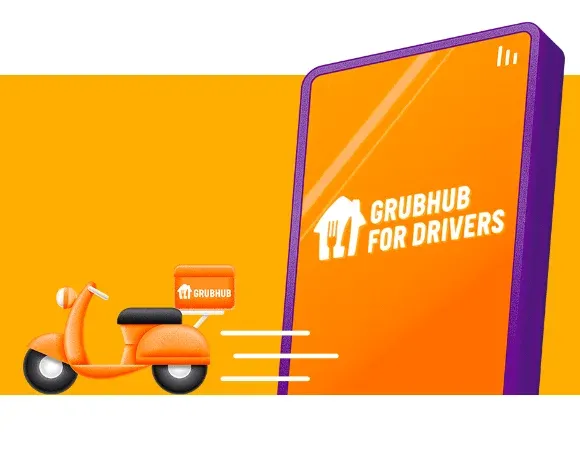On this page
DoorDash goes beyond simply connecting customers with restaurants. Recognizing the importance of their driver network, DoorDash offers a robust incentive program to empower Dashers and maximize their earning potential. During peak times, Peak Pay provides a financial boost to incentivize drivers when their services are most in demand. For ambitious Dashers, Challenges offer the chance to push their limits and earn additional rewards based on completed deliveries or income goals. Top performers can even qualify for Drive, a prestigious program granting access to larger orders with the potential for increased earnings per trip and potentially bigger tips. This multi-tiered incentive structure demonstrates DoorDash's commitment to its driver network, fostering a win-win situation for both the platform and its independent workforce.
With the rise of e-commerce and on-demand services, fast and reliable deliveries are more crucial than ever. But keeping up with demand requires a motivated and efficient delivery workforce. Here's where delivery incentives come in. These are rewards offered to drivers for achieving specific goals, such as completing a certain number of deliveries, maintaining high customer satisfaction ratings, or delivering within tight timeframes.
By implementing a well-designed incentive program, businesses can significantly improve their delivery operations. Incentives can motivate drivers to go the extra mile, leading to faster deliveries, increased productivity, and ultimately, happier customers. This blog post will explore the various types of delivery incentives, their benefits for both drivers and businesses, and best practices for implementing an effective program.
Benefits of delivery incentives
For drivers
Increased earnings potential: Incentives provide drivers with the opportunity to earn more money on top of their base pay. This can be a significant motivator, especially for drivers who rely on delivery income for their livelihood.
Improved job satisfaction: Feeling rewarded for good performance can boost driver morale and job satisfaction. This can lead to more positive work experience and a reduced desire to seek employment elsewhere.
Greater recognition: Incentive programs show drivers that their hard work and dedication are valued by the company. This recognition can foster a sense of belonging and loyalty to the organization.
For businesses
Enhanced delivery performance: Incentives can encourage drivers to prioritize speed and efficiency, leading to faster deliveries and improved customer satisfaction.
Reduced operational costs: By incentivizing on-time deliveries, businesses can minimize customer service issues, order cancellations, and refunds.
Improved driver retention: A well-designed incentive program can help attract and retain top drivers, reducing the need for constant recruitment and onboarding.
Types of delivery incentives
There are several ways to structure delivery incentives, each with its own advantages:
Per-Delivery Incentives: This is a straightforward approach where drivers receive a bonus for each successful delivery. It encourages drivers to complete as many deliveries as possible but may not incentivize timely deliveries.
Performance-Based Incentives: Rewards are tied to specific performance metrics, such as on-time delivery rate, customer satisfaction ratings, or exceeding a minimum number of deliveries per hour. This approach promotes overall good performance and customer service.
Tiered Incentive Programs: Drivers earn progressively higher rewards as they reach specific performance milestones. This gamifies the delivery process and motivates drivers to consistently strive for better performance.
Referral Bonuses: Offering incentives for referring new drivers can help businesses expand their workforce quickly.
Best practices for implementing delivery incentives
Clear goals and communication: Clearly define the metrics and behaviors that qualify for incentives. Communicate the program structure effectively to all drivers to ensure transparency and understanding.
Fair and achievable targets: Set incentive targets that are challenging but achievable. Unrealistic goals can be demotivating. Regularly review and adjust targets if necessary.
Track and analyze performance: Utilize data analytics to track program effectiveness and driver performance. Identify areas for improvement and adjust the program accordingly.
Balance cost and value: Ensure the cost of the incentive program is balanced by the benefits it brings to the business. Regularly assess the return on investment (ROI) to justify the program's existence.
Celebrate success: Recognize and celebrate drivers who consistently achieve incentive goals. Public recognition can further motivate drivers and boost team morale.
Grubhub: rewarding dedication with milestone recognition
Grubhub understands the importance of its driver network. That's why they've implemented a unique "Milestone Recognition" program. This program goes beyond just offering a flat fee per delivery. Instead, it celebrates and rewards drivers for their dedication and hard work as they achieve key delivery milestones.
Imagine this: you're cruising along, delivering delicious food and building a positive reputation with Grubhub. As you hit specific delivery benchmarks, you're not just met with a notification – you unlock a surprise reward! This could be a welcome gift card, a performance bonus to boost your earnings, or even some cool Grubhub delivery gear to showcase your commitment.
Milestone Recognition isn't just about financial incentives. It's about fostering a sense of accomplishment and appreciation. It shows drivers that Grubhub values their contributions and wants to see them succeed. This positive reinforcement keeps drivers motivated, engaged, and ultimately happy to be part of the Grubhub family. The result? A reliable and dedicated driver network that translates into a consistently positive experience for both Grubhub and its customers.

Case study
Food ordering and delivery startup improves delivery executive engagement with Compass
Challenges faced by Swiggy in managing delivery partners
Swiggy, a leading food ordering and delivery platform in India, encountered significant difficulties in managing its extensive network of delivery personnel. These challenges included:
Maintaining Partner Engagement: Keeping delivery partners motivated and engaged over time was a challenge.
Data Management: Swiggy struggled to efficiently track and analyze data related to its delivery partners. Managing and onboarding a manpower of over 120000 delivery partners onto a platform.
Customer Support: Providing effective customer support to both delivery partners and clients was difficult.
How Compass helped Swiggy
Compass, a comprehensive platform, was adopted by Swiggy to address these challenges. Compass offered Swiggy a variety of features that streamlined delivery partner management, including:
Partner Program Design: Swiggy was able to create and manage incentive programs to keep delivery partners engaged using Compass.
Data Tracking: Compass provided Swiggy with the tools to gather, track, and analyze data pertaining to delivery partners, enabling them to make data-driven decisions.
Improved Customer Support: Compass facilitated enhanced customer support for both delivery partners and Swiggy's clients.
The outcome
By leveraging Compass, Swiggy was able to significantly improve delivery partner engagement, leading to a more efficient and successful delivery network.
Also, had an increase in the usage of online training conducted by national and international trainers.
Conclusion
Delivery incentives are a powerful tool for businesses to optimize their delivery operations. By offering rewards that motivate drivers and align with business goals, companies can create a win-win situation. A well-designed incentive program can lead to a more efficient workforce, happier customers, and ultimately, a thriving delivery business. Remember, the key is to find the right balance between cost, driver motivation, and desired business outcomes. With careful planning and implementation, delivery incentives can be a game-changer for your delivery operations.




